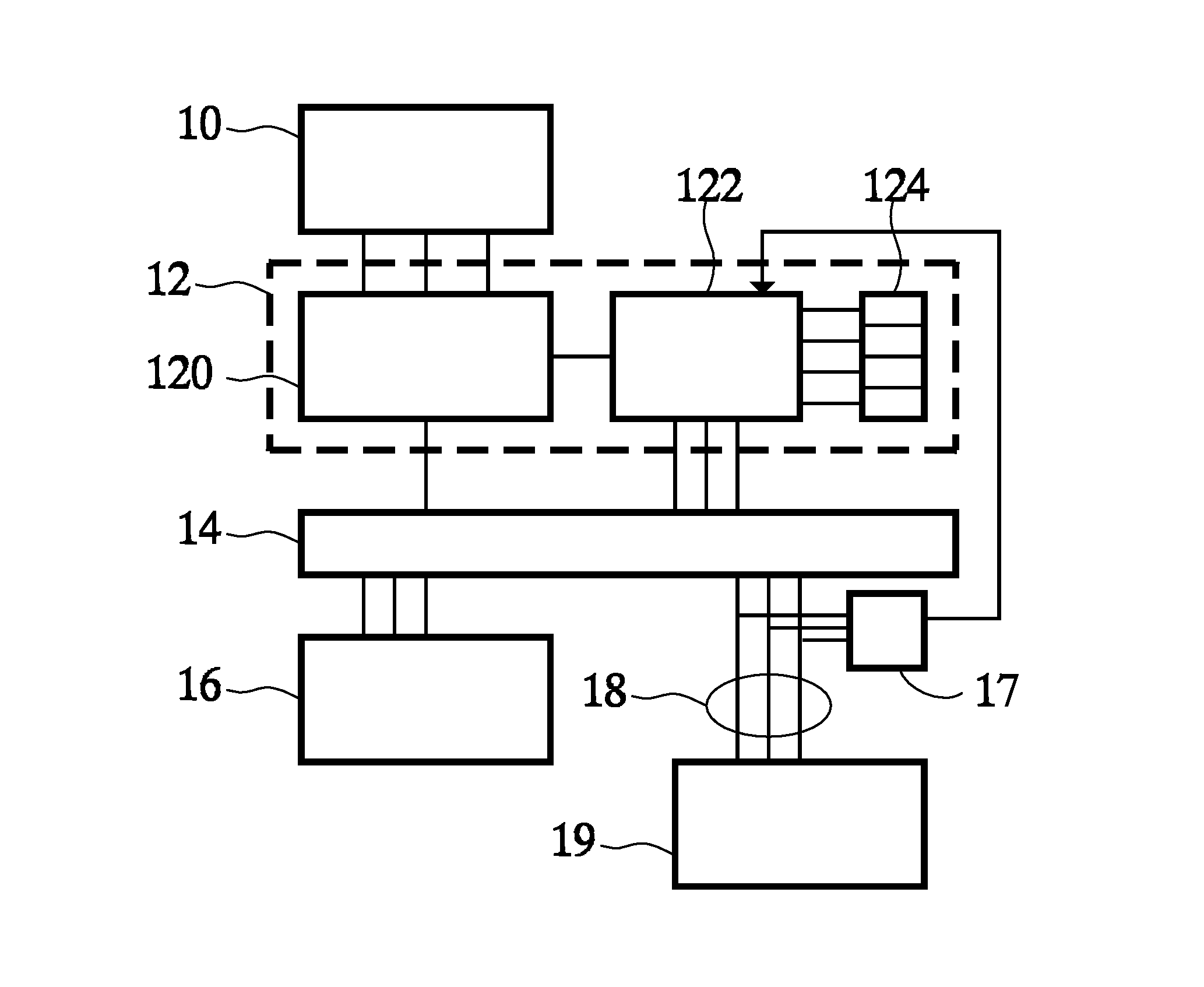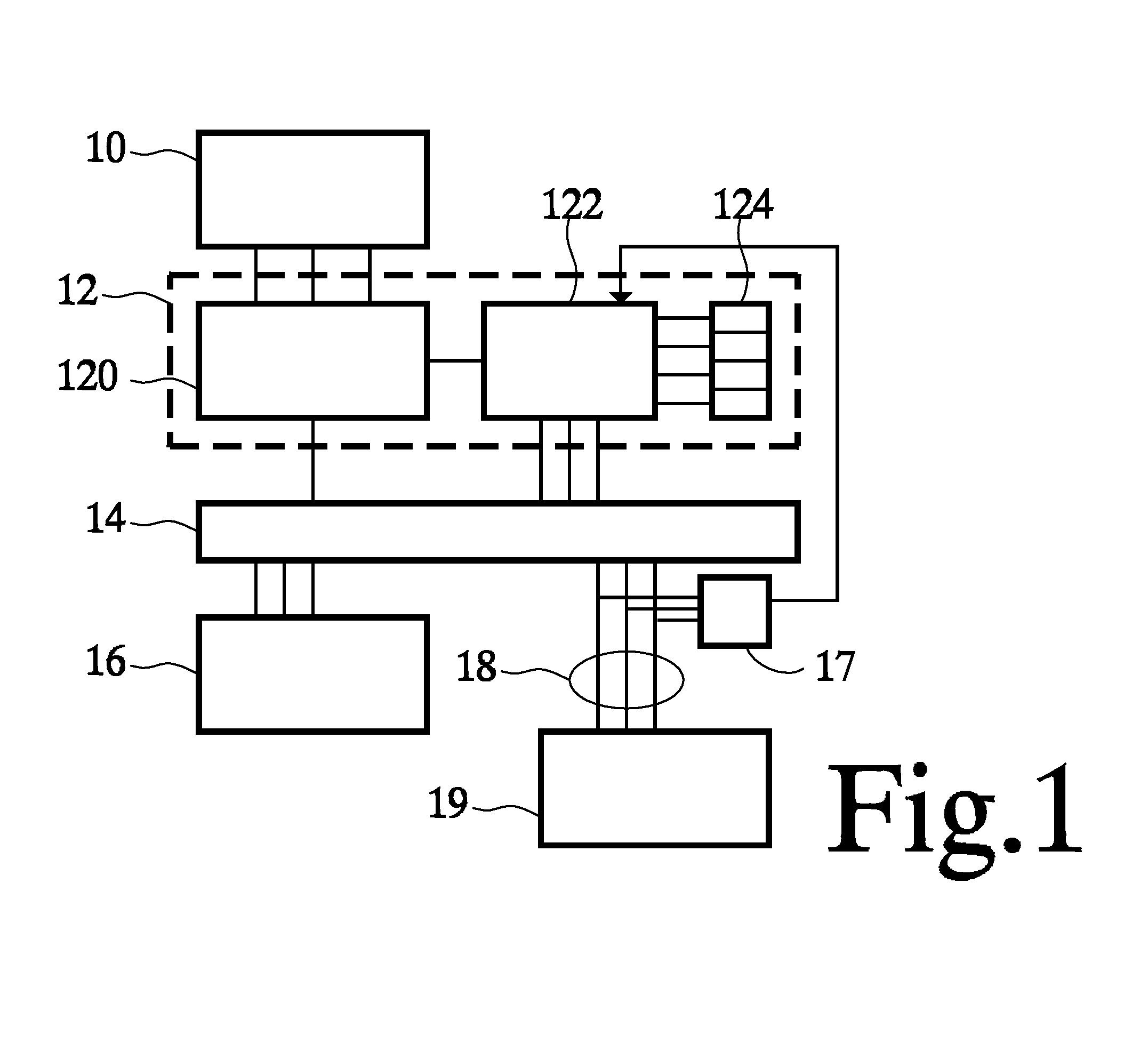Data processing circuit with cache and interface for a detachable device
a data processing circuit and detachable device technology, applied in the field of data processing circuits, can solve the problems of reducing system performance, inability to store data, so as to reduce overhead
- Summary
- Abstract
- Description
- Claims
- Application Information
AI Technical Summary
Benefits of technology
Problems solved by technology
Method used
Image
Examples
Embodiment Construction
[0013]FIG. 1 shows a data processing circuit, comprising a processor 10, a cache circuit 12, a communication circuit 14, a memory circuit 16, an optional detachment detector 17 and an interface 18 for a detachable device. By way of example a device 19 is shown attached to interface 18. By “detachable” it is meant that device 19 is can be functionally detached in any way during operation, for example by means of physical detachment, or movement out of reception range of a wirelessly communicating device, but also when power supply to the device is cut off or the operating mode of the device is changed so that it is no longer able to receive write back data from the cache memory etc.
[0014]Processor 10 is coupled to communication circuit 14 via cache circuit 12. Via communication circuit 14, the processor 10 and cache circuit 12 are coupled to memory circuit 16 and interface 18. Cache circuit 12 comprises a cache memory 120, a cache control circuit 122 and a set of registers 124. Cache...
PUM
 Login to View More
Login to View More Abstract
Description
Claims
Application Information
 Login to View More
Login to View More - R&D
- Intellectual Property
- Life Sciences
- Materials
- Tech Scout
- Unparalleled Data Quality
- Higher Quality Content
- 60% Fewer Hallucinations
Browse by: Latest US Patents, China's latest patents, Technical Efficacy Thesaurus, Application Domain, Technology Topic, Popular Technical Reports.
© 2025 PatSnap. All rights reserved.Legal|Privacy policy|Modern Slavery Act Transparency Statement|Sitemap|About US| Contact US: help@patsnap.com



